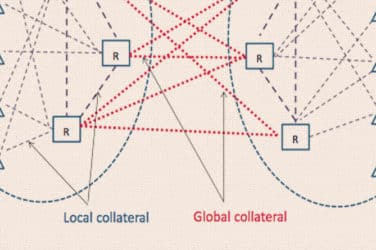
With reduction of counterparty risk a central tenet of OTC derivatives reform, risk reduction techniques such as collateralization, clearing and netting and portfolio compression are being incorporated within trading firms’ business practices.
“We believe regulatory reforms in general will increase demand for collateral management expertise,” said Scott Linden, managing director, global collateral management services at asset manager BNY Mellon.
“Our bilateral collateralization service, DM Edge, will be supporting our client’s cleared and uncleared collateral needs,” said Linden. “We are also working with our dealer clients and CCPs [central counterparties] to streamline and optimize the mobilization of collateral in the centrally-cleared environment.”
BNY Mellon is enhancing its collateral management platform for institutional clients with the introduction of an online central messaging service that will enable market participants to transmit margin calls, substitution instructions and interest statements electronically.
By enabling market participants to communicate critical information on exposures and commitments in a real-time and secure manner, and providing the ability to produce detailed audit trails of transactions, “the new service allows us to use a secure messaging hub on behalf of our customers, which will significantly enhance reliability and security”, Linden said.
High quality collateral is becoming more valuable due to regulatory drives in the wake of the financial crisis such as Dodd Frank, Basel III and Emir.
“These regulations stipulate that banks must hold more high-quality liquid assets to act as a buffer and prevent bank failures in the event of another crisis,” said Martin Seagroatt, global marketing manager at software provider 4sight Financial Software.
“They also dictate that standardized derivatives trades must be centrally cleared,” added Seagroatt. “The aim of this is to reduce systemic risk, and the central counterparties that these trades must be cleared through will only accept high-grade collateral.”
Collateral management systems address these issues by allowing users to more accurately calculate the opportunity cost of the collateral that they hold and receive.
“This helps traders make better decisions about whether a specific trade is going to be profitable based on the cost of the collateral and allows more intelligent trade pricing,” Seagroatt said.
4sight Financial Software has launched a collateral optimization module for its Xpose Collateral Management system.
The module allows financial firms to run automated availability checks based on a counterparty’s acceptability and concentration schedules, and will then propose the cheapest-to-deliver collateral within schedule.
“It allows firms to manage and allocate collateral across multiple business lines including securities lending, repo and both OTC and listed derivatives,” said Seagroatt.
BNY Mellon has partnered with AcadiaSoft, a provider of margin automation software for counterparties in the OTC derivatives market, to connect with its electronic margin call system called MarginSphere.
MarginSphere is a central messaging service that provides electronic exchange of margin calls, substitutions and interest statements between derivatives counterparties engaged in collateral management. This helps to reduce inefficiencies and manage risk in an automated fashion.
“Email is the dominant method to communicate margin activity in the derivatives collateral space globally, and this solution will allow us to migrate from email communication to a secure messaging hub,” said Linden at BNY Mellon.
As the OTC derivatives industry moves towards implementing the clearing mandate, there is a need to maintain consistency between the bilaterally transacted OTC derivative world and the newly emerging cleared world.
Among large dealers, 84% of all transactions are now executed with the support of a collateral agreement, up from 80% in 2011, with 96% of all trades executed in the credit derivatives markets subject to collateral arrangements, according to the 2012 Margin Survey by the International Swaps and Derivatives Association, a trade body.





